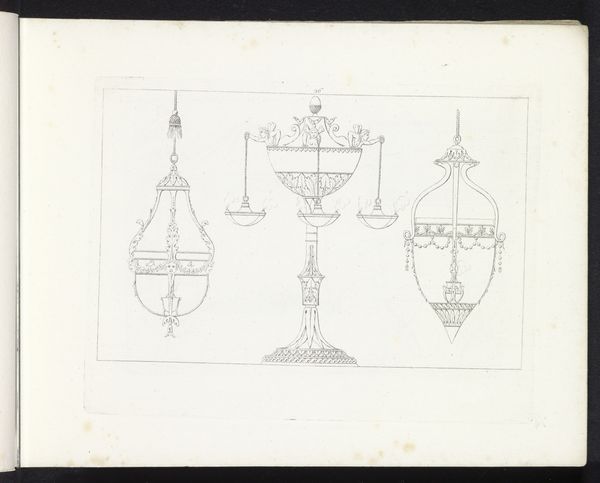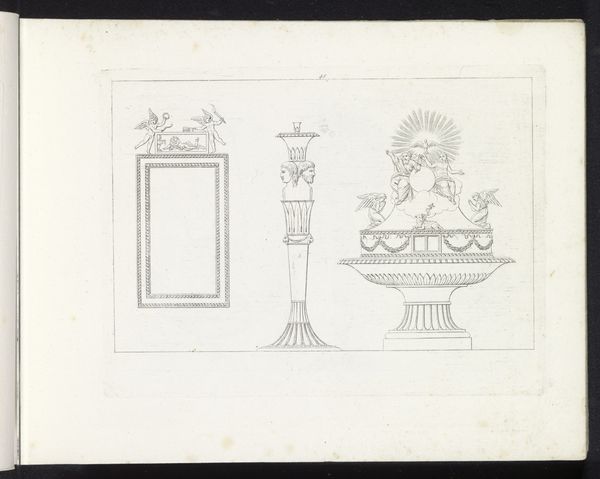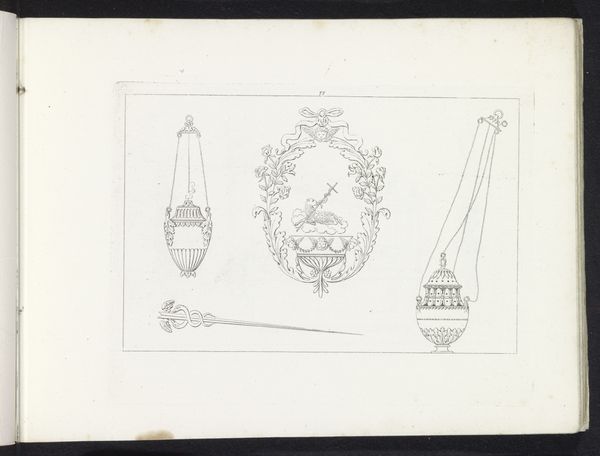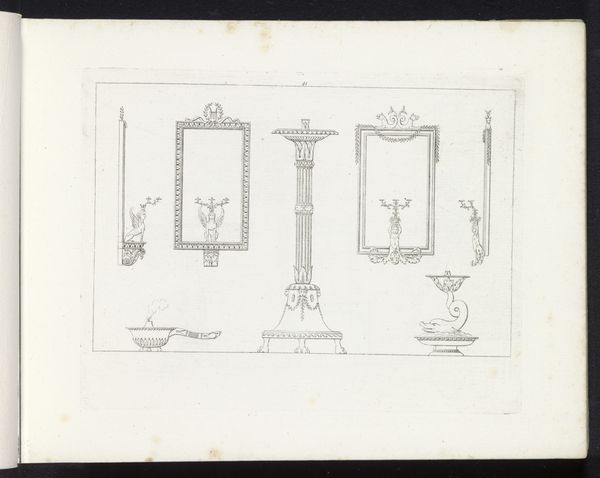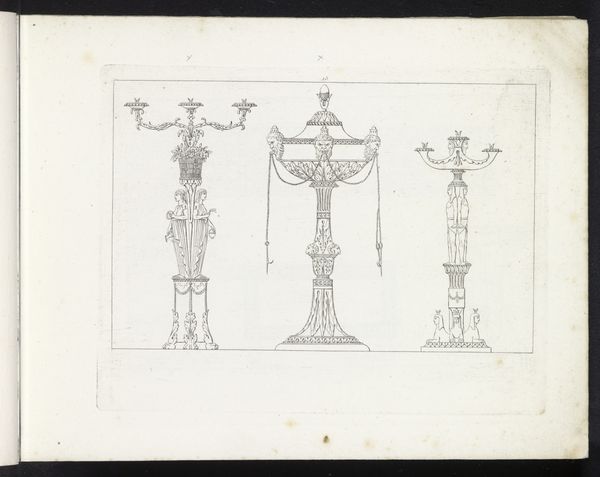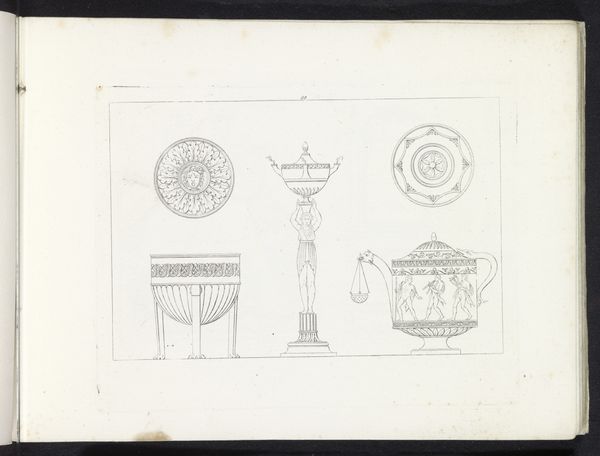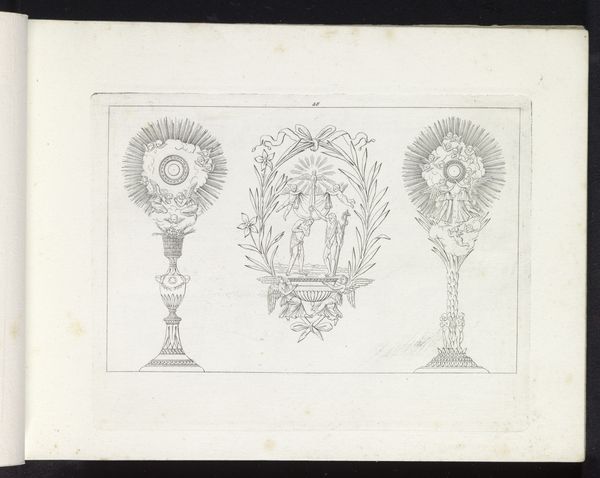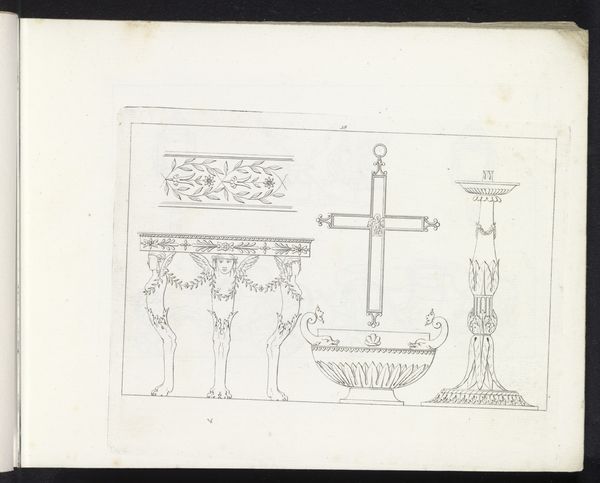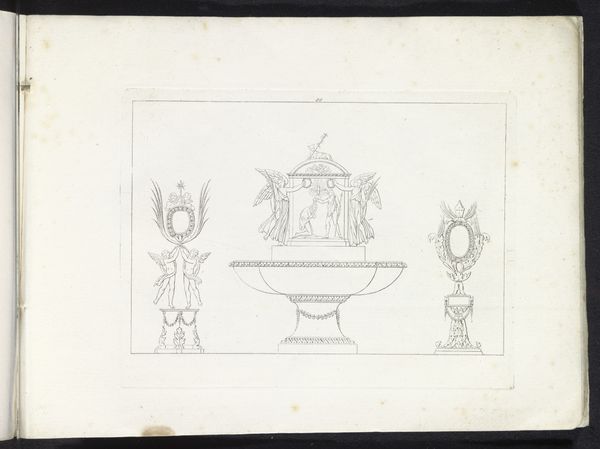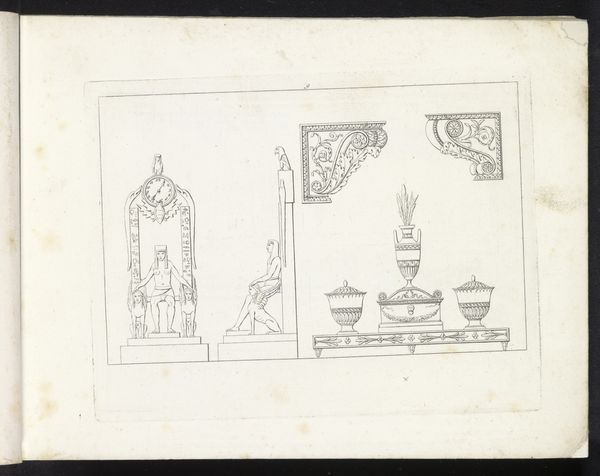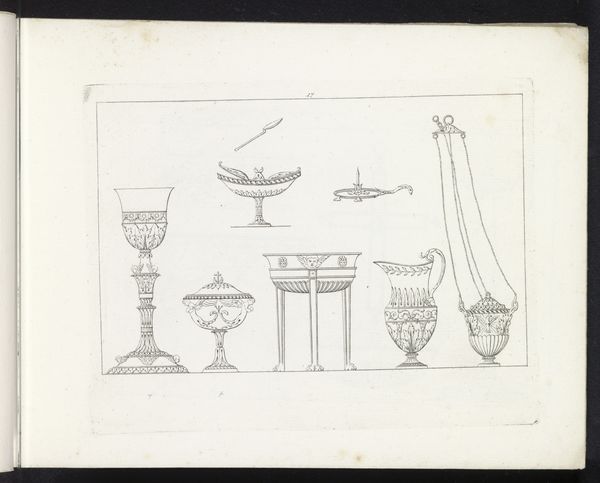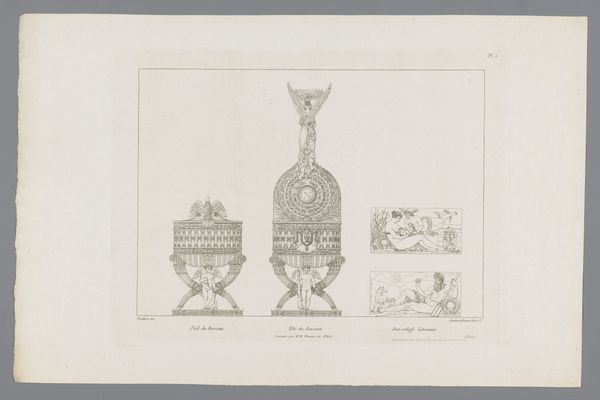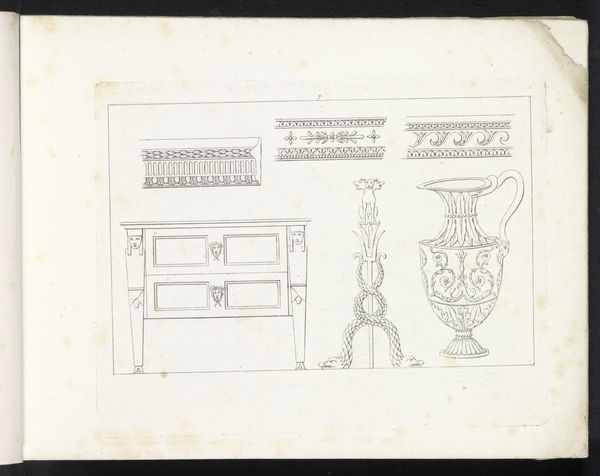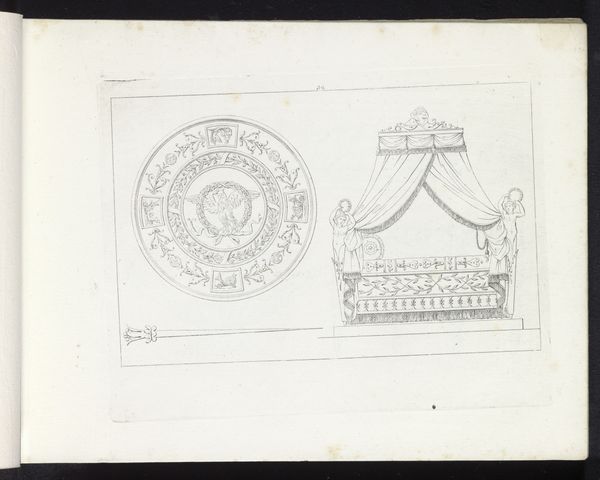
drawing, ink
#
drawing
#
neoclacissism
#
ink
#
geometric
#
line
#
academic-art
Dimensions: height 161 mm, width 215 mm
Copyright: Rijks Museum: Open Domain
Editor: Here we have Pietro Ruga's drawing, "Two Incense Vessels and a Monstrance," created in 1817 using ink. The rendering feels so precise and almost technical, like an architectural plan. What do you see in this piece? Curator: This drawing transports me to a time steeped in ritual. The objects themselves, incense vessels and the monstrance, are laden with symbolic weight. The monstrance, especially with its radiant sunburst, recalls not just religious devotion but perhaps even ancient sun worship traditions that echo through Christianity. Don't you find the Neoclassical style lends an air of timelessness, too? Editor: It definitely does. I was also thinking about how geometric those sunbursts look. Why do you think Ruga leaned so hard into symmetry and clean lines when depicting religious objects? Curator: Perhaps Ruga was commenting on the era. The Age of Enlightenment emphasized reason, so Neoclassicism offered a visual language of order during revolutionary upheaval. This drawing then becomes more than just representation; it’s a study in how power—religious and political—wants to be perceived: stable, eternal, divinely ordained. What do you think the emphasis on line contributes to this symbolism? Editor: The linear quality almost flattens them. Rather than hyper-realistic figures, we get ideas of the objects. The cultural memory, almost, instead of the object. Curator: Precisely! They become emblems of a belief system. It speaks to the enduring power of symbols. I think I’ll revisit our exhibit labels through that lens.
Comments
No comments
Be the first to comment and join the conversation on the ultimate creative platform.
